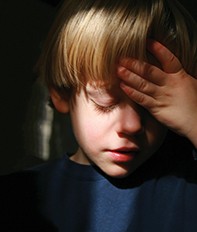Peer Reviewed
Feature Article Pain medicine
Childhood migraine: assessment, parental assurance and treatment
Abstract
An accurate history of the child’s headaches will almost always be diagnostic. GPs can assess patients to determine whether their migraine can be modified by advice regarding the proper use of symptomatic therapies and whether daily prophylactic treatment is necessary.
Key Points
- Migraine occurs in about 5 to 10% of children and is therefore a frequent reason for visits to GPs.
- Almost 75% of children with true migraine have a close family relative who has or has had a history of migraine.
- By definition, all children with migraine are normal between headaches.
- GPs can make a diagnosis of straightforward childhood migraine based on the history and physical examination. They can then give advice to patients regarding the proper symptomatic treatment and discuss prophylactic therapy, if and when necessary.
- The indication for considering prophylaxis is the recognition that the migraine condition is significantly interfering with the child and/or family’s life.
- Convincing the parents that the child fulfils the criteria for migraine and explaining why sinister conditions are unlikely is a vital part of the evaluation.
Purchase the PDF version of this article
Already a subscriber? Login here.

